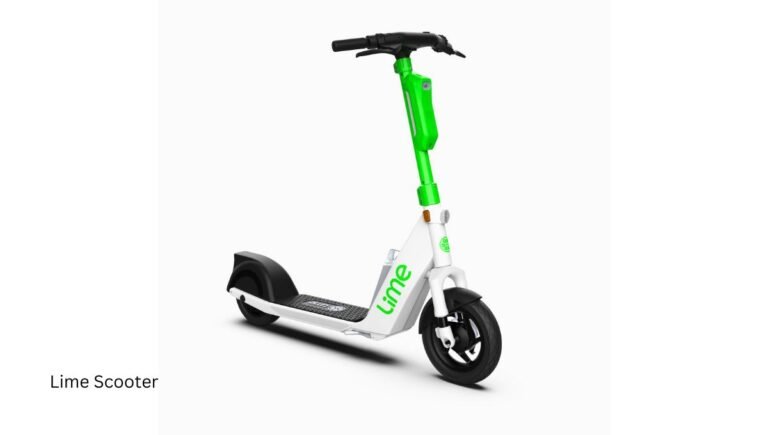How Far Can Electric Scooter Travel: Unveiling Limits
An electric scooter can typically travel up to 15 to 30 miles on a single charge, depending on the model and battery capacity. With advancements in technology, some high-end electric scooters can even travel up to 50 miles on a single charge.
The range of electric scooters continues to improve as manufacturers develop more efficient battery systems and motor technologies. As people increasingly seek eco-friendly and convenient modes of transportation, electric scooters have gained popularity as a sustainable and efficient way to travel short to medium distances.
With the ability to navigate through urban environments with ease, electric scooters offer a practical solution for commuting and leisure activities. The growing interest in electric scooters has also prompted innovations in battery and motor technologies, leading to enhanced range and performance.
The Rise Of Electric Scooters
Electric scooters are revolutionizing urban commuting with impressive travel ranges. These eco-friendly vehicles can travel up to 25 miles on a single charge, offering a convenient and sustainable transportation option for short to medium distances.
Popularity And Market Growth
Electric scooters are becoming increasingly popular in urban areas as an efficient and eco-friendly mode of transportation. With the rise of ride-sharing services like Lime and Bird, electric scooters are now more accessible than ever. According to a report by ResearchAndMarkets.com, the global electric scooter market is expected to grow at a CAGR of 7.2% from 2020 to 2025, driven by increasing demand for eco-friendly transportation options.
Environmental Impact And Urban Mobility
The environmental impact of electric scooters is significant. Electric scooters produce zero emissions, making them an eco-friendly alternative to traditional gas-powered vehicles. They are also more affordable and convenient than cars, making them an attractive option for short commutes and urban mobility. Moreover, the use of electric scooters can help reduce traffic congestion and air pollution in cities.
In terms of range, electric scooters can travel anywhere from 15 to 50 miles on a single charge, depending on the model and battery capacity. Factors such as weight, terrain, and speed also affect the range of electric scooters. For instance, electric scooters with larger batteries and higher wattage motors tend to have a longer range.
In conclusion, the rise of electric scooters is a positive trend for urban mobility and the environment. As the market continues to grow, we can expect to see more efficient and innovative electric scooters that push the boundaries of what is possible.
Electric Scooter Basics
Electric scooters can travel an average of 15 to 30 miles on a single charge, depending on the model. Factors like battery capacity and speed affect the overall distance an electric scooter can cover. Regular charging and maintenance ensure optimal performance and longer travel range.
Battery Technology
Electric scooters rely on advanced battery technology to provide power for their operation. The most common type of battery used in electric scooters is the lithium-ion battery. These batteries are lightweight, compact, and offer a high energy density, making them ideal for electric scooter applications.
Lithium-ion batteries have several advantages over other types of batteries. They have a longer lifespan, meaning they can be recharged and used for a longer period of time before needing to be replaced. Additionally, they have a higher energy density, which means they can store more energy in a smaller size.
When it comes to electric scooters, battery capacity plays a crucial role in determining how far the scooter can travel on a single charge. The higher the battery capacity, the longer the scooter can travel before needing to be recharged. Battery capacity is typically measured in watt-hours (Wh), and electric scooters can have varying capacities depending on their model and design.
Motor Efficiency
Another important factor that determines how far an electric scooter can travel is the efficiency of its motor. The motor is responsible for converting electrical energy from the battery into mechanical energy to propel the scooter forward.
Electric scooter motors come in different types, including brushless motors and brushed motors. Brushless motors are more efficient than brushed motors because they have fewer moving parts and produce less friction. This increased efficiency results in less energy loss and a longer range for the scooter.
Additionally, the power output of the motor can also affect the scooter’s range. A higher power output motor will provide more torque, allowing the scooter to tackle inclines and uneven terrain more easily. However, a higher power output motor may consume more energy, reducing the scooter’s overall range.
In conclusion, understanding the basics of electric scooters, including battery technology and motor efficiency, is essential for determining how far an electric scooter can travel. By considering the battery capacity and motor efficiency, riders can choose an electric scooter that meets their specific travel needs. So, whether you’re planning a short commute or a longer journey, knowing the electric scooter basics will help you make an informed decision.
Assessing Travel Range
Factors Affecting Distance
Several factors can affect the travel range of an electric scooter, influencing how far it can travel on a single charge. These factors include battery capacity, riding speed, terrain, rider weight, and weather conditions.
Manufacturer Claims Vs. Real-world Performance
It’s important to note that while manufacturers often provide estimated travel ranges for their electric scooters, real-world performance may vary. Actual travel distances can be influenced by individual riding habits, maintenance, and environmental factors.
Maximizing Scooter Range
Electric scooters can travel an impressive distance on a single charge, with some models reaching up to 30 miles. Maximizing scooter range involves factors like riding at a consistent speed, avoiding steep inclines, and maintaining proper tire pressure to ensure efficient battery usage.
Riding Habits
To maximize the range of your electric scooter, it’s important to adopt good riding habits. One of the most important things you can do is to maintain a steady speed. Constant acceleration and deceleration can drain your battery quickly, so try to maintain a consistent pace. Additionally, avoid riding on rough terrain or uphill whenever possible, as this can also put extra strain on your battery.
Maintenance Tips
Regular maintenance is key to ensuring that your electric scooter continues to perform at its best. One of the most important things you can do is to keep your battery in good condition. This means charging it regularly and avoiding overcharging. It’s also important to keep your scooter clean and free of debris, as this can help to reduce friction and prolong the life of your battery.
By adopting good riding habits and following a few simple maintenance tips, you can maximize the range of your electric scooter and enjoy longer rides without worrying about running out of power. Remember to always charge your battery fully before heading out, and to avoid riding in extreme weather conditions that can also affect your scooter’s performance. With a little bit of care and attention, your electric scooter can take you further than you ever thought possible.
Case Studies: Longest Rides Recorded
Electric scooters have proven to be capable of long rides, with recorded case studies showcasing impressive distances covered. These studies explore the question of how far electric scooters can travel, providing valuable insights into their range and performance.
Record-breaking Journeys
When it comes to electric scooters, many people wonder how far these vehicles can actually travel on a single charge. To shed some light on this, we have gathered information on some of the longest rides ever recorded on electric scooters. These case studies not only showcase the impressive capabilities of electric scooters but also highlight the limitations encountered during these record-breaking journeys.
Limitations Encountered
Despite the remarkable distances covered in these record-breaking journeys, it is important to acknowledge the limitations encountered by riders. One of the main challenges faced is the battery life of electric scooters. While advancements in battery technology have greatly improved the range of these scooters, there is still a limit to how far they can go without needing a recharge.
Additionally, factors such as terrain, rider weight, speed, and weather conditions can also impact the overall distance an electric scooter can travel on a single charge. Riding uphill or against strong headwinds, for example, can significantly reduce the scooter’s range. It is important for riders to be aware of these limitations and plan their journeys accordingly.
Another limitation that riders may encounter is the availability of charging stations. While electric scooters can be charged using a standard household outlet, it may not always be convenient or feasible to find a charging point during long rides. This is particularly relevant for riders who venture into remote areas or plan to cover extensive distances.
Despite these limitations, electric scooters have proven to be capable of covering impressive distances. Let’s take a look at some of the remarkable journeys that have pushed the boundaries of electric scooter travel.
Charging Infrastructure
Electric scooters typically have a range of 15-30 miles on a single charge, depending on factors such as weight, speed, and terrain. To ensure a smooth ride, it’s important to have access to charging infrastructure that can quickly recharge the battery when needed.
Charging Infrastructure
Electric scooters are gaining popularity due to their eco-friendly nature and cost-effective operation. The availability of charging infrastructure plays a crucial role in determining the practicality of electric scooters for daily commutes. Let’s explore the charging infrastructure for electric scooters, including the availability of charging stations and home charging solutions.
Availability Of Charging Stations
Charging stations for electric scooters are becoming increasingly accessible in urban areas. These stations are strategically located in public spaces, commercial areas, and parking lots, making it convenient for riders to charge their scooters while running errands or during work hours. The growing network of charging stations alleviates range anxiety and encourages more people to adopt electric scooters for their daily transportation needs.
Home Charging Solutions
For added convenience, electric scooter owners can opt for home charging solutions. This typically involves installing a charging station at home, allowing riders to plug in their scooters overnight and wake up to a fully charged vehicle in the morning. Home charging solutions are especially practical for individuals who have limited access to public charging stations or prefer the convenience of charging their scooters at home.
In summary, the availability of charging infrastructure significantly impacts the practicality and convenience of using electric scooters for daily travel. The accessibility of public charging stations and the option for home charging solutions contribute to the overall appeal and feasibility of electric scooters as a sustainable mode of transportation.
Future Innovations
As electric scooters continue to gain popularity, the future holds exciting possibilities in terms of advancements and innovations. Let’s explore some key areas where technology is expected to revolutionize the way electric scooters operate.
Advancements In Battery Life
Battery technology is constantly evolving, leading to extended scooter range. Lithium-ion batteries are becoming more efficient, allowing scooters to travel longer distances on a single charge.
Smart Scooter Technologies
Smart features such as GPS tracking, app integration, and auto-lock mechanisms are enhancing the user experience. These technologies not only improve convenience but also enhance security and safety.
Choosing The Right Electric Scooter
When selecting an electric scooter, it’s crucial to understand the specifications. Pay close attention to range, battery capacity, motor power, and charging time.
Compare top electric scooter models based on their range. Look for models with long-lasting batteries and efficient motors to ensure extended travel distances.
Conclusion
Understanding the range of electric scooters is vital for users. Factors like battery capacity and terrain affect how far an electric scooter can travel. By considering these aspects, riders can maximize their scooter’s range and enjoy longer, more efficient rides.
Prioritize range when choosing an electric scooter.


